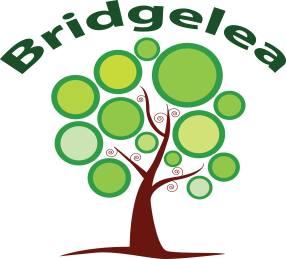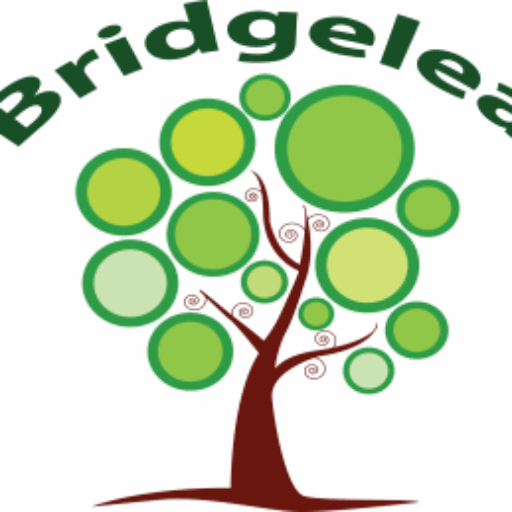Art & Design
At Bridgelea we are artists!
Art and design at Bridgelea provides the children with the opportunities to develop and extend skills and an opportunity to express their individual interests, thoughts and ideas. We want our children to love art and design and want them to have no limits to what their ambitions are and growing up wanting to be illustrators, graphic designers, curators or printmakers!
The art and design curriculum has been carefully crafted so that our children develop their artistic capital. We want our children to remember their art and design lessons in our school, cherish these memories and embrace the opportunities they are presented with!
At Bridgelea the pupils have a variety of emotional and complex needs. As a result, many of our pupils have low self-esteem and find it difficult to express themselves. The arts are a valuable means of developing confidence, and communication skills and facilitating expression, ideas and feelings. In addition, through purposeful, imaginative and creative activities pupils learn to take managed risks, trying out new ideas and new ways of working without fear of failure. Art encourages the exploration of design ideas. Pupils can express what they know, understand and can do, through a variety of media and various forms of presentation.
Pupils will learn about the place and role of art in life today, as well as in different times and cultures. Pupils should know how art reflects and shapes our history, and contributes to the culture, creativity and wealth of our nation.
Bridgelea provides opportunities for the pupils to be aware of their own and others’ work, describing what they think and feel. The staff at Bridgelea value the contribution art makes to the quality of life in and beyond school. The staff believe that providing a range of experiences is essential to support the well-being and resilience of the pupils. Over the school year every child will access lessons with an external artist.
Curriculum Intent
The art and design curriculum promotes curiosity and love and thirst for learning. It is ambitious and empowers our children to become independent and resilient.
We want to equip them with not only the minimum statutory requirements of the art National Curriculum but to prepare them for the opportunities, responsibilities and experiences of later life.
We enrich their time in our school with memorable, unforgettable experiences and provide opportunities which are normally out of reach. For example, we took part in the ‘Bee in the city’ project in 2018. This was one of the most spectacular public art events that Manchester has ever seen. Our BridgeBee has been designed and produced by our students. The whole school entered a design competition to produce a Bee that reflected the spirit of Bridgelea School and Manchester. The children discussed what living and attending school in Manchester meant to them. They wanted to express the school as a whole community and how important that community was in enabling aspiration and success for all. Every class spent a whole day trip visiting our and other communities’ bees around the city. What an amazing experience! We firmly believe that art is not just about what happens in the classroom, it is about the added value we offer to really inspire our children.
We are currently undertaking our Artsmark. The Artsmark is the only creative quality standard for schools and education settings, accredited by Arts Council England.
Artsmark’s flexible framework is designed to help you embed arts, culture and creativity across your whole curriculum, celebrating your commitment to cultural education. Exciting projects that we are part of in 2021/23 include:
- Happy, Safe, Free https://www.youtube.com/watch?v=NFXqLvPSgWM
- The World Reimagined https://www.theworldreimagined.org/
- Art of Resilience programme. This is a 1.30-hour workshop delivered over 6 weeks by the Manchester Art Gallery for small groups of KS2 pupils where creatives share their practice and process to help build resilience and wellbeing. This program helps our children to understand what resilience is, and how creativity can help them develop it by understanding that failure is a part of the process of learning and development.
- We work closely with MADE. MADE is Manchester’s local cultural education partnership. They support educators by producing high-quality and meaningful creative learning experiences, connecting young people to the arts in our city. https://www.mademcr.org/about
- https://www.mademcr.org/resources
As a school, we believe that art is a vital and integral part of children’s education. Art contributes to children’s personal development in creativity, independence, judgement and self-reflection. The art curriculum will develop children’s critical abilities and understanding of their own and others’ cultural heritages through studying a diverse range of male and female artists and designers throughout history.
Curriculum Implementation
The art and design curriculum has been carefully built and the learning opportunities and assessment milestones for each mile post crafted to ensure progression and repetition in terms of embedding key learning, knowledge and skills.
We teach a skills-based art curriculum, which allows children to express their creative imagination as well as provides them with opportunities to practise and develop mastery in the key processes of art: drawing, painting, printing, collage and sculpture. This is supported by the studying of key artists throughout history. Children enjoy exploring the artwork of the week in addition to their art sessions.
Each class accesses a half-term session with the artist for around 2.5hrs. This session immerses them into the strand for the half term and the key knowledge that we want them to learn. The CT supports this session throughout the half term with 3 additional sessions building on the key skills and knowledge for this half term. We believe that by crafting our curriculum this way, we improve the potential for our children to retain what they have been taught, to alter their long-term memory and thus improve the rates of progress they make. Teachers are also able to clearly monitor over time the development and deepening understanding of the skills in art.
Curriculum Impact
The assessment information is collected in the children’s art folder and analysed as part of our monitoring cycle. As a school, this is a developing approach and we are working with other schools in Manchester to look at effective ways of assessment in Art and Design.
At key stage 1, the powerful knowledge in art is linked to the national curriculum’s main characteristics of:
-
- Using materials (use a range of materials creatively to design and make products)
- Drawing (use drawing, painting and sculpture to develop and share their ideas, experiences and imagination)
- Use colour, pattern, texture, line, shape, form and space (develop a wide range of art and design techniques in using colour, pattern, texture, line, shape, form and space)
- A study of a range of artists (Study a range of artists, craft makers and designers)
At key stage 2, the powerful knowledge in art is linked to the national curriculum’s main characteristics of:
-
- Using sketching (create sketches to record their observations and use them to review and revisit ideas)
- Drawing, painting and sculpture (improve their mastery of art and design techniques, including drawing, painting and sculpture with a range of materials)
- the study of great artists (to be able to talk about great artists, architects and designers in history)
Cultural Capital & Art and Design at Bridgelea (Wider Outcomes)
- Children have access to key knowledge, language and meanings in order to understand and readily apply to their work in Art and Design, and across the wider curriculum.
- Educational Visits, children visit galleries and enjoy experiencing art in their community.
- Children will understand what being an artist, designer, sculptor and architect means.
- The creativity of our pupils needs channelling into a field where they learn to empathise with others and create solutions for others’ problems, not just their own.
- They will benefit from taking a design brief and designing an artwork that meets the needs of others. Additionally, our pupils do not always have the ability to see a process through from start to finish. By learning Art and Design, pupils will develop perseverance to design, make, test, evaluate and amend their creations, seeing the rewards of sticking at something for its entirety.
- There is a focus on recycling materials and how to minimise waste. Pupils develop an awareness of health & safety for themselves and others when working practically. Pupils are taught the social skills around behaviour self-regulation to ensure collective responsibility for a safe and efficient working environment. They are taught to challenge each other’s behaviour and how it impacts the collective expectations of the group. Pupils explore how artworks contribute to the lifestyle and consumer choices and understand how products evolve according to users’ and designers’ needs, beliefs, ethics and values.
- In Art and Design education, pupils look at cultural influences on the art we surrounded and the diversity of the styles.
At Bridgelea, we ensure that the knowledge that we cover in Art and Design lessons is driven by the National Curriculum. Each session forms part of a sequence of learning, to build up composite knowledge as the pupil moves through school. Each phase is linked to famous artists and the important vocabulary associated with each technique or subject.
Art and design are vast areas which offer a valuable opportunity for vital metacognitive skills, creativity and critical evaluation. These elements are established for the different elements of Art and Design using the model illustrated below:
| Teaching sequence | Metacognition | |
| Teacher elicits understanding of the topic | Activating Prior knowledge | Discussion of strategies and knowledge learnt in previous sessions |
| Reference to and critical evaluation of the work of established artists | Instruction and modelling of strategy: I do | Teacher instructs on organisation and planning |
| Review of recent learning | ||
| Experiment and investigation of techniques and media | Memorisation and guided practice: we do | Discussion regarding approach and modelling of worked example |
| Pupil applies new techniques, skills and media to produce artwork | Independent practice: I do | Pupil completes task |
| Evaluation and improvement | ||
| Reflection: recap of knowledge and skills that have been understood | Structured reflection | Learners reflect on model applied, how it was used and how they might use it in the future |
On a longer timescale, this teaching sequence fits into composite knowledge for each strand of art. If we take ‘colour’ as an example, we break that down into its smaller component parts:
We start with primary colours; naming, recognising and mixing primary colours. Pupils would then move on to the secondary colours; mixing of primary colours. Then, children would move on to families of colour, ‘hot’ and ‘cool’ colours, analogous colours, and complementary and contrasting colours which build on both primary and secondary colour theory. Subsequently, children learn about tints, tones and shades of colour which draws on their understanding of colour families, the colour wheel and associated subjects encountered in Key Stage 1. In Key Stage 2, children experiment with the complex application of colour theory by looking at things like perspective and painting using colour; the creation of mood and atmosphere using colour and the use of expression using colour.
This process is repeated for each aspect of Art and Design, permitting children to build knowledge and improve skills.





